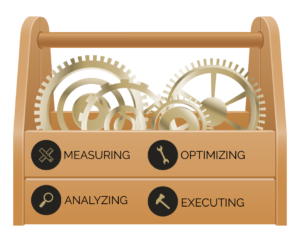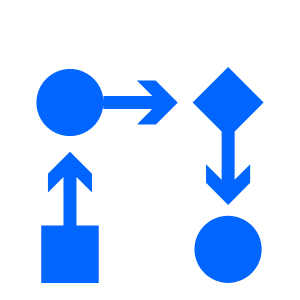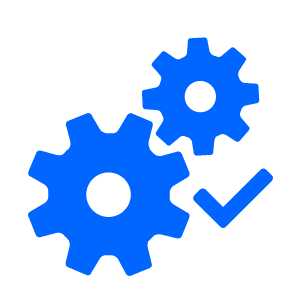 The automation of business processes promises many advantages, such as an increase in efficiency, cost savings or a consistently high product quality. In order to master your automation project and come closer to the hoped-for improvements, you need tools or software solutions. And what does the software have to provide? In this article, we have put together a symbolic automation toolbox that introduces four basic tools with functions that it takes to automate business processes.
The automation of business processes promises many advantages, such as an increase in efficiency, cost savings or a consistently high product quality. In order to master your automation project and come closer to the hoped-for improvements, you need tools or software solutions. And what does the software have to provide? In this article, we have put together a symbolic automation toolbox that introduces four basic tools with functions that it takes to automate business processes.
Why do I need a whole toolbox?
Business processes are complex. Even small and medium-sized companies have a large number of different, interlinked processes that run on a daily basis.
In order to grasp the complexity of business processes, to manage and to orchestrate them, software solutions are needed that are equivalent to a well-stocked toolbox. This is because the multitude of processes can only be managed by a diverse selection of tools that execute different methods and functions.
 The toolbox for automation
The toolbox for automation
Complex processes require systems with a wide range of tools and functions. Regardless of which method or system you want to use – the new toolbox must include these four basic tools in order to be able to automate business processes.

Tool 1: Measuring
How do I get the relevant process data? What processes are there?
To automate, you need a tool that collects data from various source systems and IT landscapes and manages it digitally and centrally. The tool must be able to connect to other programs, systems and sources through a wide variety of interfaces and continuously compile data. Through this bundling of information, the tool should create a so-called "digital twin". This means that a virtual copy of the actual as-is processes is created.

Tool 2: Analyzing
Which processes are suitable for automation?
Not every process can be automated. The second tool, the analyze function, is needed to identify suitable business processes. The more repetitive and constant a process, the more likely it is to be appropriate for automation. The analysis makes it possible to detect such patterns and uncover automation potential. In addition, the success of automation can be analyzed retrospectively.

Tool 3: Optimizing
Are the business processes optimized? Are there any weak points or delays?
Non-optimized processes should not be automated. The optimization tool is closely linked to the analysis function. During the analysis, optimization potential is also uncovered, which allows the business processes to be adapted and improved in their flow. One form of optimization can be the automation of the process if the process analysis comes to this conclusion.

Tool 4: Executing
Do I have my processes under control? How do I execute corrective actions?
The fourth basic tool for business process automation combines process management with the execution of measures. The tool must be capable of executing actions automatically based on the measurements, analysis, and optimizations.
Tool 4, the execution tool, can work, for example, in BPM (Business Process Management), through explicitly programmed workflows. Or – one step further – PEM systems (Process Execution Management) can execute measures themselves in a data-driven and automated manner or trigger them proactively. BPM and PEM are two procedures for managing and orchestrating processes. To stay with our symbolism, they are two well-stocked toolboxes for automation projects.
Want to hear more about automation and Process Execution Management?
Webinar on Demand | Experience MEHRWERK's tool experts on the digital stage for a third time together with the independent consultants of the renowned process mining service vendor Deloitte. Learn first-hand how process mining acts as an objective guide, reliable advisor and independent player for the implementation of automation.

